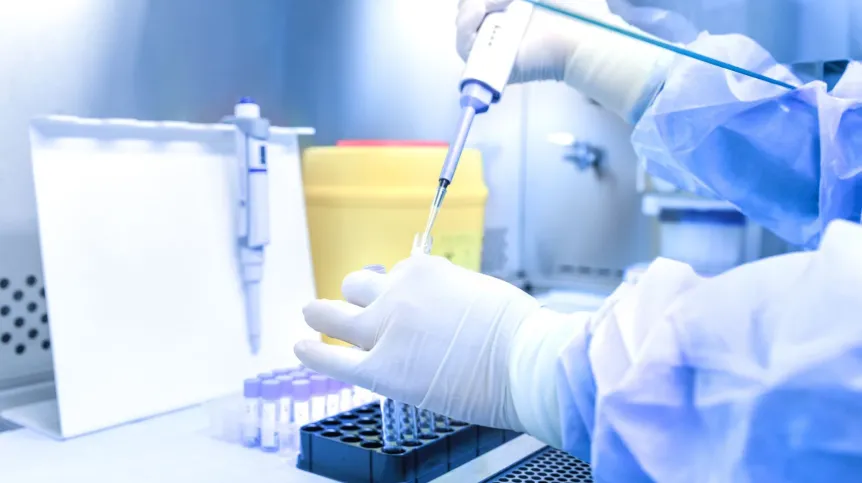
Venous thromboembolic events after COVID-19 vector vaccines are very rare, but the reasons need explanation, say Polish scientists in their publication in the scientific journal Vaccines.
Dr. Piotr Rzymski, an expert in the field of medical biology and scientific research at the Poznan University of Medical Sciences, along with Professor Robert Flisiak and Professor Bartłomiej Perek analysed several possible mechanisms that could be the cause of venous thromboembolic events after COVID-19 vector vaccines.
He said: “It is clear to us that anything leading to VTEs after vaccination must be highly specific, requires the occurrence of specific circumstances, and perhaps only takes place in specific genetic conditions. One possible mechanisms that could lead to this type of event is very similar to which is observed in heparin-induced thrombocytopenia (HIT).
“In this rare event, when heparin forms a complex with platelet factor 4 (PF4), the immune system recognizes that complex as foreign and forms antibodies against it. They, in turn, activate further platelets that produce more PF4 and the reaction begins to run out of control, promoting thrombosis.”
If a similar mechanism occurred, this would mean that one of the components of the vaccine must form a complex with PF4, against which antibodies are formed. Rzymski said: “In our work, we discuss what could be this component, but we also indicate that the polymorphism of individual genetic sequences may be conducive to the whole situation.”
He added that other possibilities are also discussed in the publication. They include a direct interaction of adenovirus vector with platelets. He continued: “This is possible, because the platelets have receptors that can be used by both the chimpanzee adenovirus in the AstraZeneca vaccine and the human adenovirus Ad26in the J&J vaccine.
"Of course, adenovirus particles would have to enter the bloodstream first, but it can not be ruled out that sometimes there is such a translocation outside the place of vaccine administration. However, we should remember that while the vaccine adenovirus can infect platelets, they are not capable of expression of the coronavirus spike protein, because they have no cell nucleus and there will be no expression of such viral genes in them.
'It is also very unlikely that the antibodies against the coronavirus spike protein could attack platelet factor 4. The open question is whether the antibodies against adenovirus, which form after the vaccine administration, can enter into such a cross reaction. This can be verified very quickly.”
He added that “it is possible that the spike protein can sporadically escape from the antigen presentation system, be released in a free form, enter into reactions with platelets and activate them. This mechanism has been suggested by German researchers. There are several potential mechanisms worth investigating. It is possible that thrombosis and accompanying thrombocytopenia after the administration of the COVID-19 vaccine has a multifactorial background. Such events are certainly limited to special circumstances and conditions, which makes them very rare.”
Rzymski said there are two important things to remember: “Firstly, benefits from vaccination against COVID-19 significantly outweigh the potential risk associated with receiving the preparation. Secondly, COVID-19 is a factor that very significantly increases the risk of thrombosis and its serious consequences. By vaccinating, we protect ourselves from sometimes a devious virus and the effects of infection on our body.”
He added that he hopes some of the mechanisms discussed in the article will be investigated by other research groups and jointly lead to understanding not only the reasons for VTEs, but also to determining the group of people who at risk of their occurrence. “That's how science works, we inspire and complement each other in order to search for solutions to individual problems,” he said. (PAP)
author: Anna Jowsa
ajw/ drag/ kap/
tr. RL













